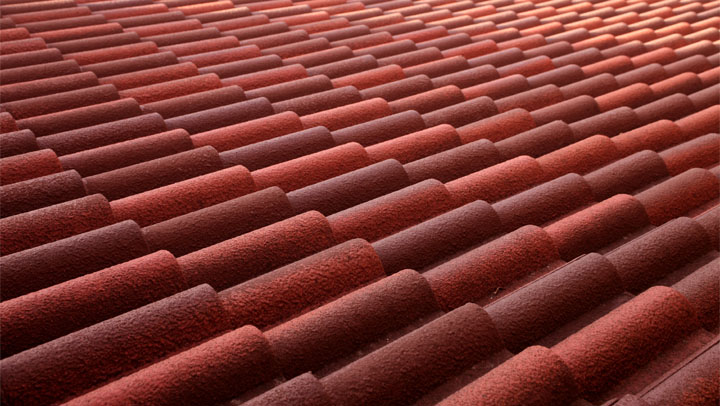Best Underlayment For Tile Roofs Arizona
The underlayment for tile roofs plays a crucial role in protecting your home from water infiltration and ensuring the longevity of the roofing system. The best underlayment for tile roofs typically depends on the type of tile you’re using and the climate in your region. Here are some common underlayment options for tile roofs:
- Asphalt-Saturated Felt (ASF) Underlayment: Asphalt-saturated felt, often referred to as tar paper or roofing felt, is a traditional and widely used underlayment material. It provides a good level of protection against water infiltration and is commonly used with both clay and concrete tiles. It comes in different weights (usually 15 lb or 30 lb), with the heavier weight providing more durability.
- Synthetic Underlayment: Synthetic underlayment materials, such as polypropylene or polyester, have become increasingly popular due to their durability and resistance to moisture. They are often preferred in areas with high humidity or where heavy rains are common. Synthetic underlayment is also lightweight and easier to handle during installation.
- Rubberized Asphalt Underlayment: Rubberized asphalt underlayment combines the benefits of asphalt-saturated felt and synthetic materials. It offers excellent waterproofing capabilities and is especially useful in regions with heavy rainfall or where extra protection is required. It is also self-sealing, which helps prevent water from seeping through nail holes.
- Self-Adhesive Membrane Underlayment: This type of underlayment is easy to install as it comes with an adhesive backing that sticks directly to the roof deck. Self-adhesive membranes provide an additional layer of waterproofing and are often used in high-risk areas like valleys and eaves.
- Peel-and-Stick Underlayment: Similar to self-adhesive membranes, peel-and-stick underlayment is convenient to install and offers excellent waterproofing properties. It’s a good choice for areas prone to leaks or where extra protection is needed.
- Clay or Concrete Tile Underlayment: Some roofing systems designed specifically for clay or concrete tiles may use a specialized underlayment designed for those materials. These underlayments are usually designed to accommodate the unique characteristics of these heavy tiles.
When choosing the best underlayment for your tile roof, it’s essential to consider local building codes, climate conditions, and the specific type of tile you plan to use. Additionally, consult with a roofing professional or contractor who can provide guidance based on your specific roofing project. Proper installation of the underlayment is as critical as the material choice, so it’s essential to follow manufacturer guidelines and industry best practices during installation to ensure your tile roof remains watertight and long-lasting.
Damage To The Roof
Damages to the roof can also affect its lifespan if it is not handled and repaired.
What Can Damage A Tile Roof?
Damage to roofing can originate from weather or crashes on the tiles. Trees or their branches falling can damage tiles, just like someone walking on the roof can.
What are the benefits of a tile roof?
Tile roofs offer a lot of benefits over other materials. Their appearance nice and even though they’re costly to initially install, they’re a wise investment due to how long they can last.
Durability
Tile roofs are significantly durable. They can last fifty years plus when they’re maintained and cared for properly. Some might last even longer than that.
How Can I Maintain My Tile Roof?
Keeping the roof properly maintained is the best way to benefit from its long lifespan.
Stay Off the Roof
Tiles are fragile. Whereas tile is weather and wind resistant, it isn’t resistant to direct force. A tile roof could be damaged by falling tree branches or by people walking on it. You must step on 2 tiles at a time when walking on them and walking in their valleys is advisable. If someone needs to go on your roof for installing something or for cleaning, carefully examine the roof later to be sure no tiles were damaged.
Routine Inspections
Routine inspections are going to help guarantee any damage to your roof is found and repaired prior to it becoming a bigger problem. This minimizes further damage and saves you money by decreasing the repairs needed.
Hire A Professional Roofing Contractor
Since tile roofs are required to be installed properly and should not be walked upon, it’s best for the general health of your roof to hire a professional roofing contractor. Professional roofers can install your roof and then assist in maintaining it in addition to repairing any damage.
Professional Roofing Installation Services
You’ve got a lot of great options for roofing materials for your tile roof life span. No matter which roofing material type you choose Paul’s Roofing is here to help install it right. Our team installs whichever roofing material you want the right way, the first time. We strictly used the highest quality and longest lasting roofing materials to ensure our customer’s satisfaction. Paul’s Roofing can help with installation of shingle roofing, tile roofing, spray foam roofing and more. Call us at 480-964-4006 for more information.

